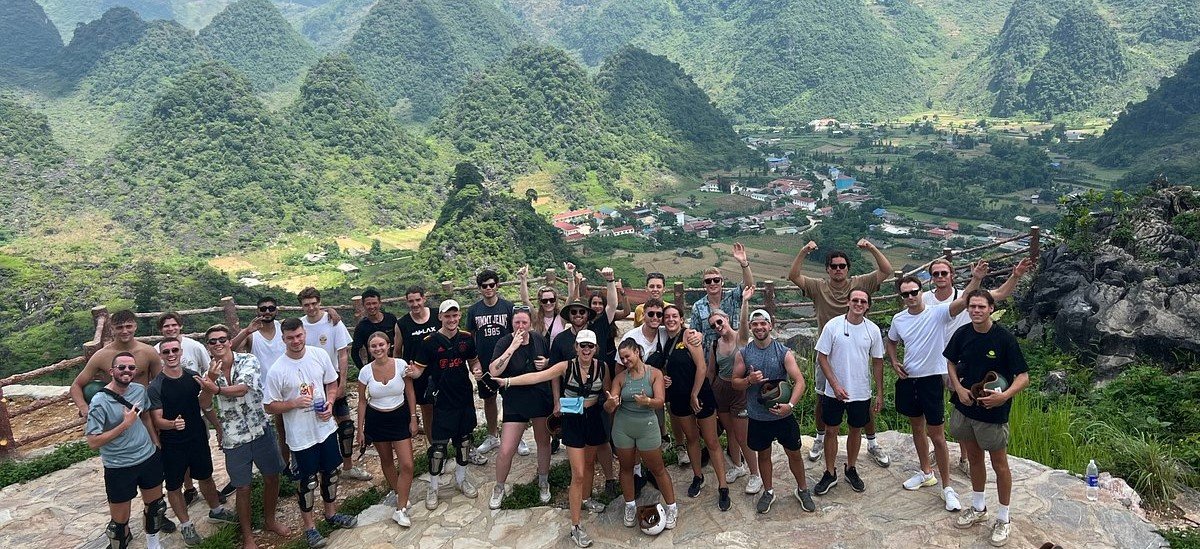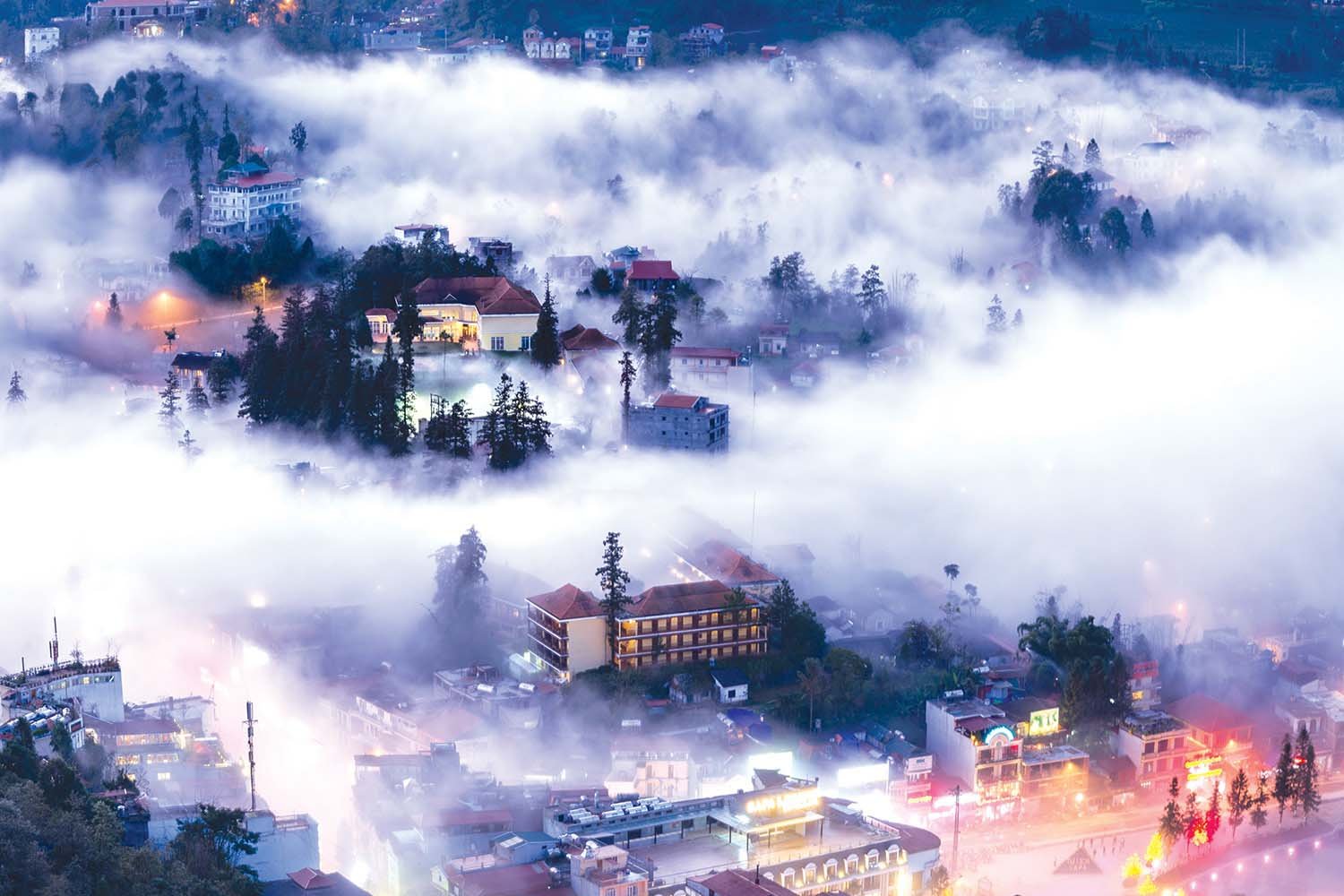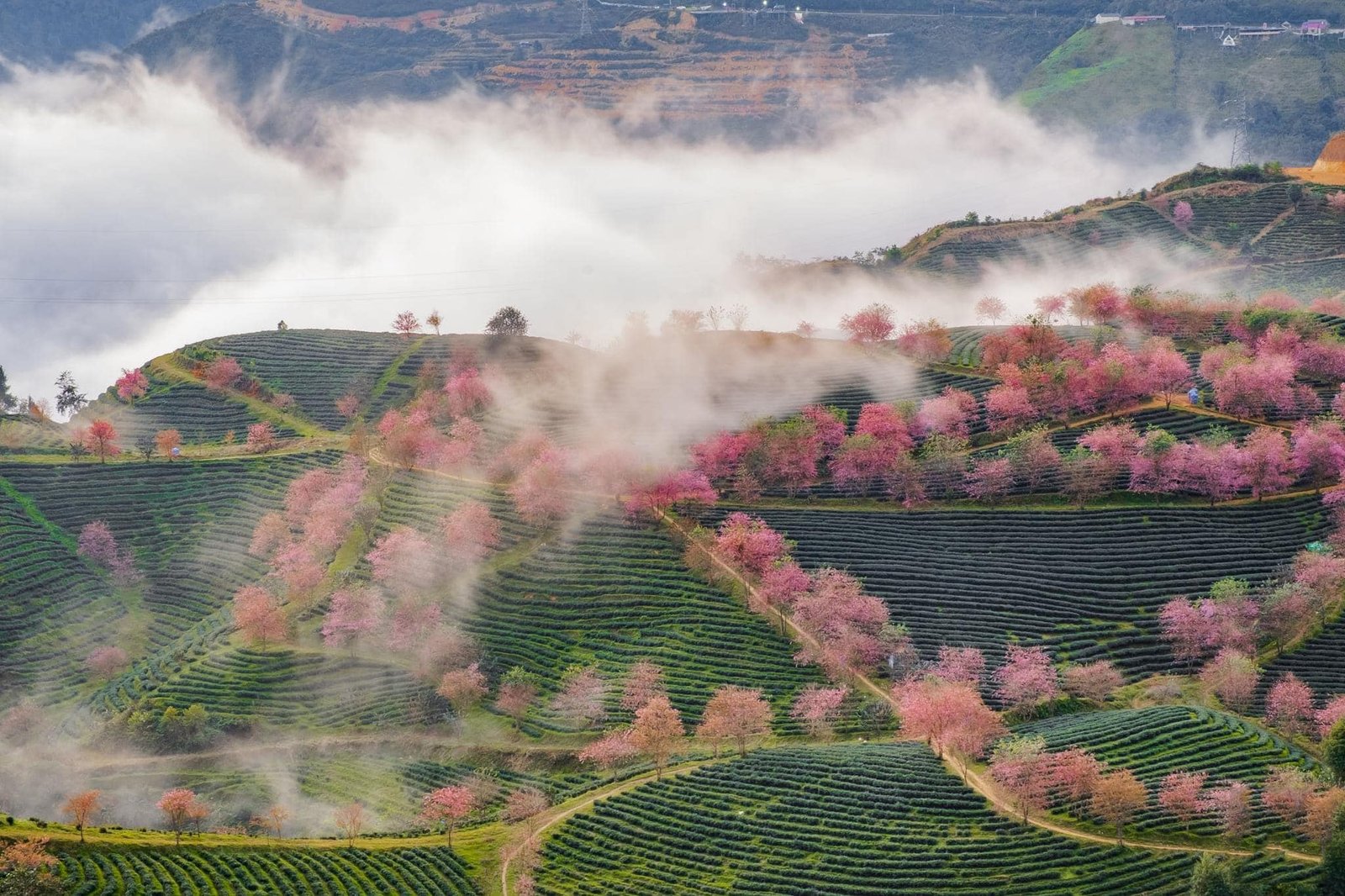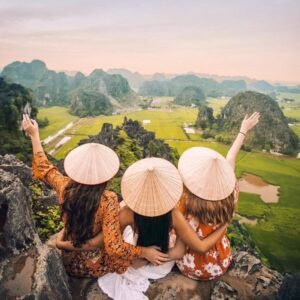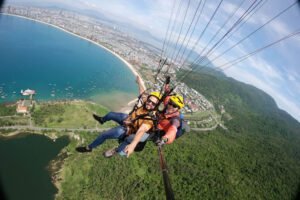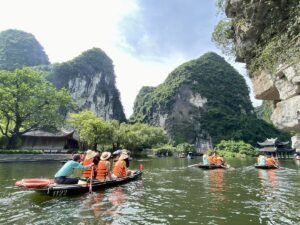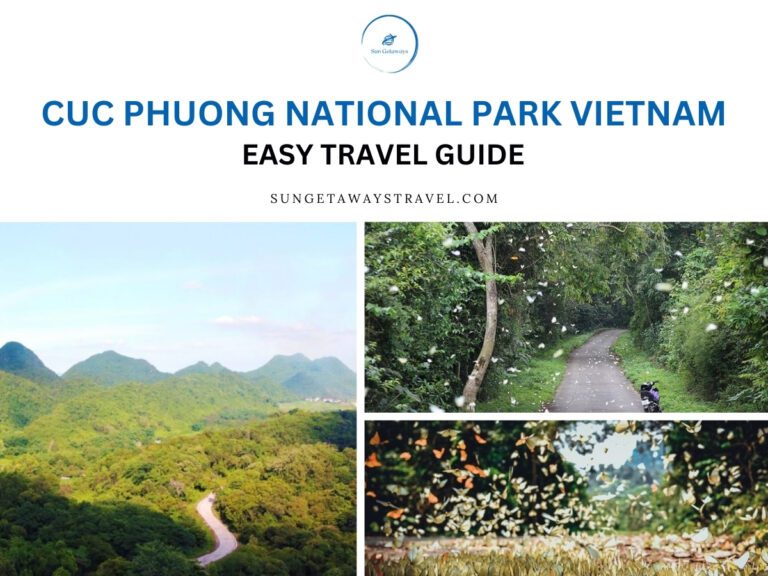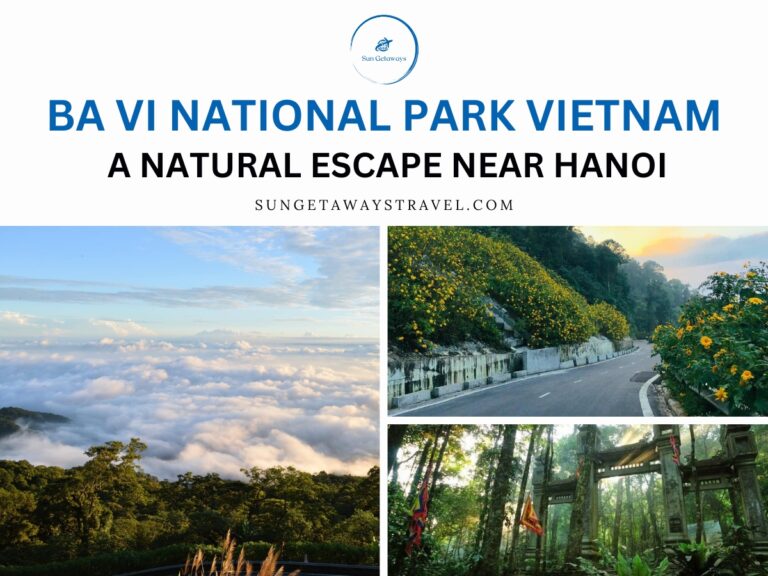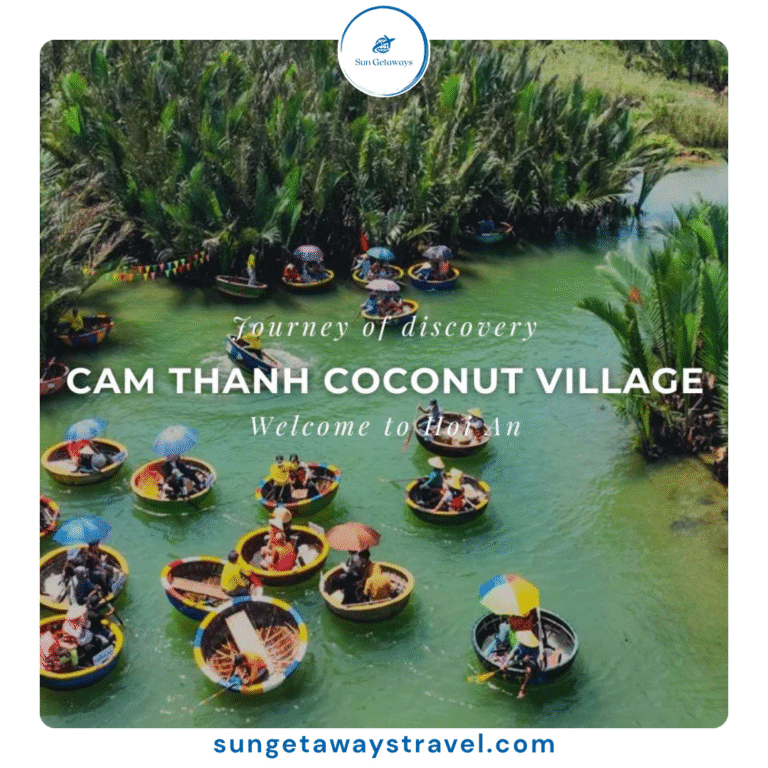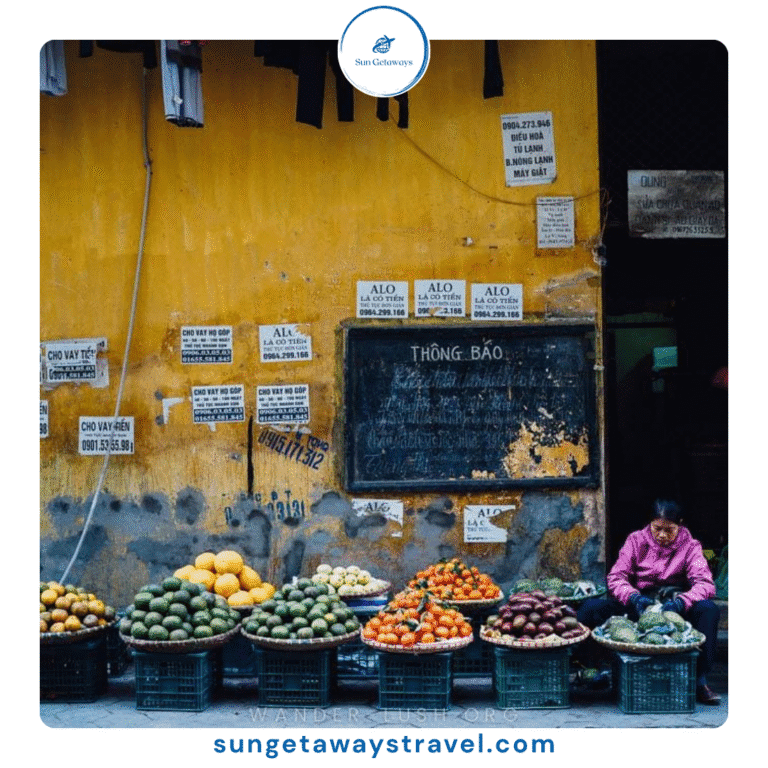Embrace the Beauty: 6 Reasons to Explore Sapa, Vietnam
 Mai Anh
Mai Anh Nestled amidst the picturesque mountains of Northern Vietnam lies Sapa, a destination that beckons with its natural splendor and cultural richness. From lush rice terraces to vibrant hill communities, Sapa offers a tapestry of experiences that captivate the hearts of travelers. In this article, we delve into seven compelling reasons why Sapa deserves a spot on your travel itinerary. Join Sun Getaways Travel as we uncover the enchanting beauty and unique allure of this breathtaking destination!
Table of contents
1. Housing Indochina’s Highest Peak
2. Listed Among the World’s 50 Most Stunning Towns
3. Iconic Rice Terraces of Vietnam
4. Paradise for Trekking Enthusiasts
1. Housing Indochina’s Highest Peak
One of Sapa’s enduring attractions is its possession of Fansipan Peak, towering at an impressive 3,147 meters, making it the highest mountain peak not only in Vietnam but also in the entire Indochina region.
To reach the summit of this iconic peak, you have several options to choose from:
- Embark on a trekking adventure lasting 1-3 days, depending on your preferred itinerary. Prices start from 41 USD per day for a comprehensive package tour, inclusive of a guide, meals, transportation, and a well-structured tour program.
- Opt for a cable car ride to the mountain shoulder, followed by a hike to the summit. Combo packages are available starting from 33 USD.
- Alternatively, you can take the cable car to the mountain shoulder and then utilize the mountain climbing train to reach the summit. Train tickets are priced from 6 USD per person.
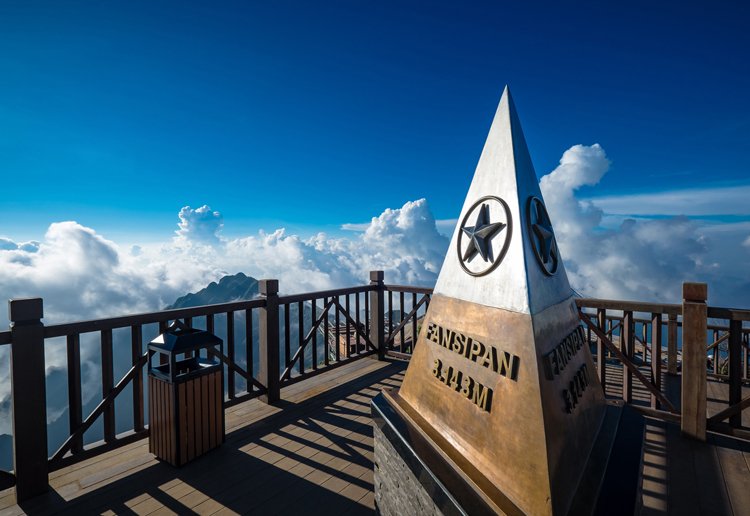

Fansipan is dubbed as Indochina rooftop
Fansipan Mountain is part of the Sun World Fansipan Legend complex, offering a range of facilities and attractions. Here, visitors can explore a cable car system, dine at restaurants, shop at food and souvenir stalls, visit temples, admire giant Buddha statues, and of course, conquer the summit of Fansipan. It’s a destination where pilgrims can pay homage, travelers can take a break, and adventurers can embark on a memorable journey of discovery.
You do not know what to do in Sapa? Explore >>> The Enchanting Beauty of Sapa – A Must-Visit Destination
2. Listed Among the World’s 50 Most Stunning Towns
Recently, the U.S. magazine Condé Nast Traveler (May 2023) unveiled its list of the World’s 50 Most Beautiful Towns, where Sapa earned the esteemed title of the “town in the mist.”


Sapa is distinguished by its vibrant cultural tapestry, being inhabited by six ethnic communities, notably the Hmong, Dao, Tay, and Giay people. Here, traditional houses dot the landscape, nestled in villages or perched precariously on mountain cliffs, each community showcasing its own distinctive cultural heritage and customs.
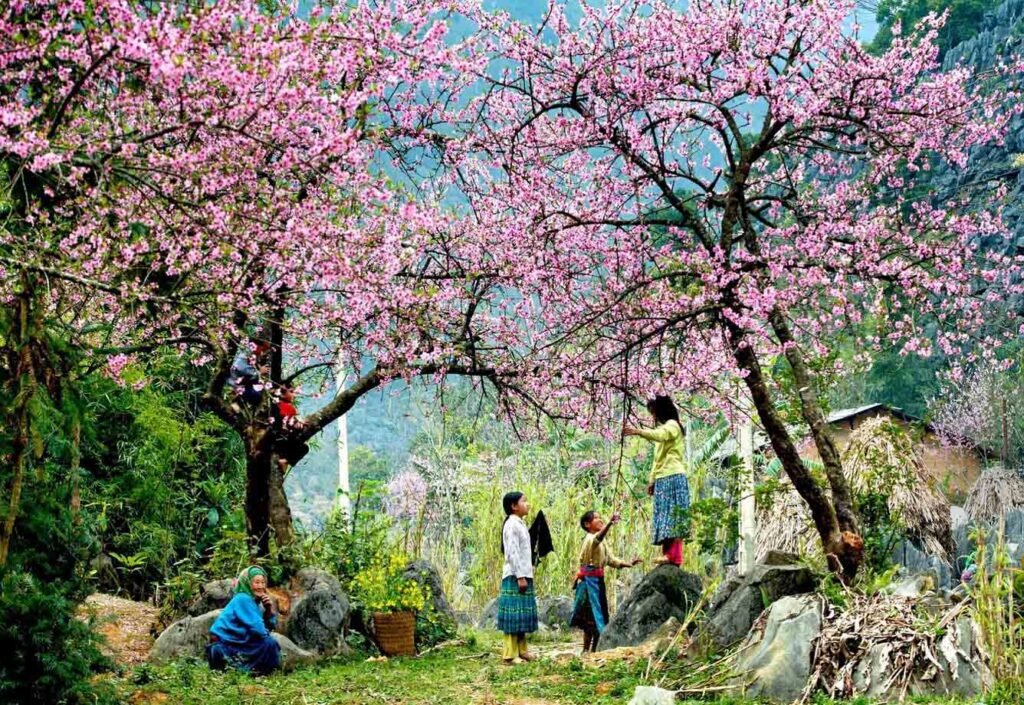

3. Iconic Rice Terraces of Vietnam
Vietnam has a rich tradition of rice cultivation, evidenced by the presence of terraced rice fields in regions like Mu Cang Chai (Yen Bai), Ha Giang, and particularly Sapa. Nestled amidst the mountains, local communities ingeniously cultivate their staple crops on these stepped terrains, harnessing water from mountain springs for irrigation.
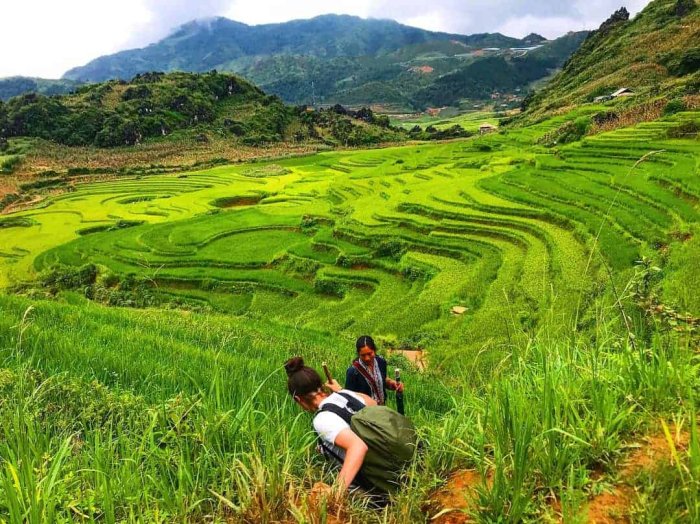

There are several ways to admire the beauty of Sapa’s rice terraces during the season. You can embark on a trek through the scenic Muong Hoa Valley, opt to stay at local homestays nestled near the rice fields, enjoy an aerial view by taking the Fansipan cable car, or embark on a journey aboard the mountain climbing train.
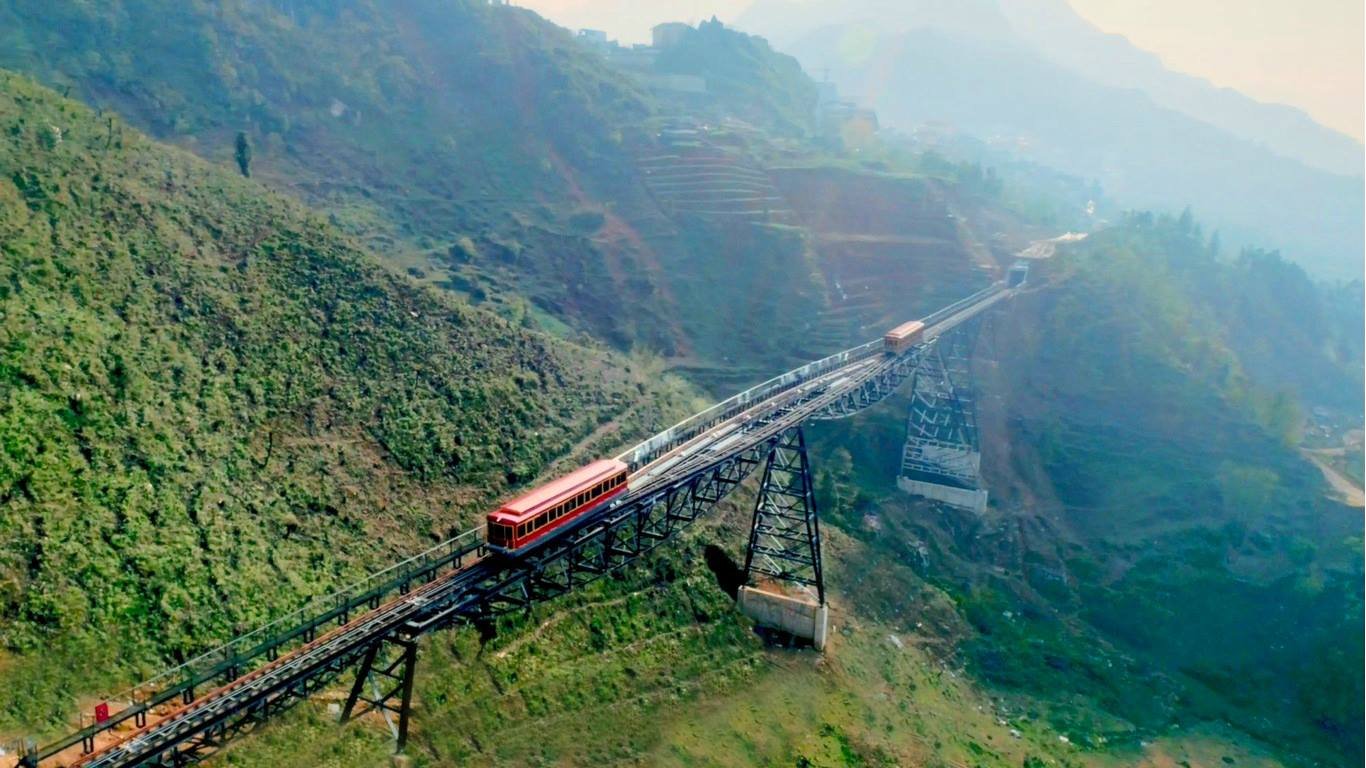

Climbing by train
4. Paradise for Trekking Enthusiasts
It’s important to highlight the enriching trekking experience in Sapa. Along your trek, you’ll have the opportunity to visit villages and observe multigenerational homes where families engage in their daily activities: drying corn, weaving fabric, dyeing textiles, making incense, tending to livestock, and practicing traditional singing and dancing. The locals, known for their friendliness, often speak fluent English. Women are typically dressed in traditional attire and carry craft baskets. They are readily available to offer directions and are willing to share their life stories if your paths happen to cross.
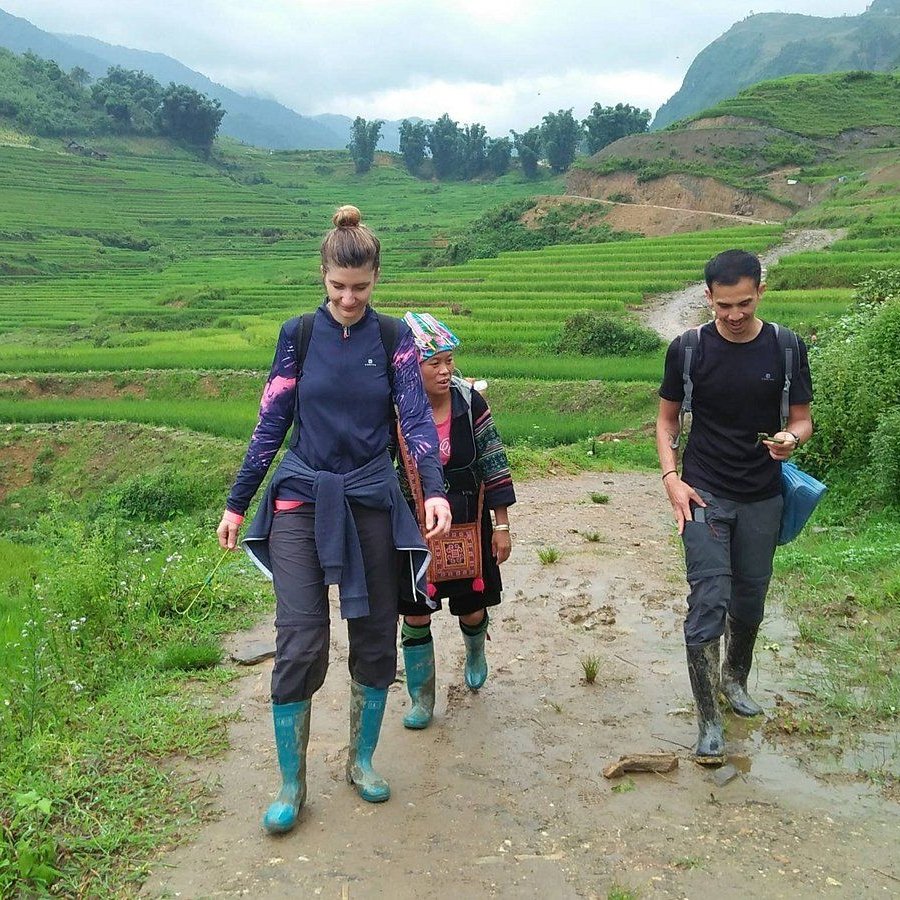

In Sapa, there are various trekking routes available, catering to different difficulty levels and offering diverse experiences:
- Fansipan Route: This trek is quite challenging and may span several days, requiring thorough preparation in terms of physical fitness and equipment.
- Y Linh Ho Route: The Y Linh Ho trek takes approximately 2-3 hours and offers panoramic views of the Muong Hoa Valley from different breathtaking angles.
- Lao Chai – Ta Van Route: Considered the most gentle option, this route showcases local trading activities and product showcases, providing insight into the community’s daily life.
- Xa Xeng – Hau Thao Route: Slightly more challenging than the Y Linh Ho trek, this trail traverses mountainous terrain and is less accessible. Along the way, you may encounter bamboo forests and locals’ animal pens.
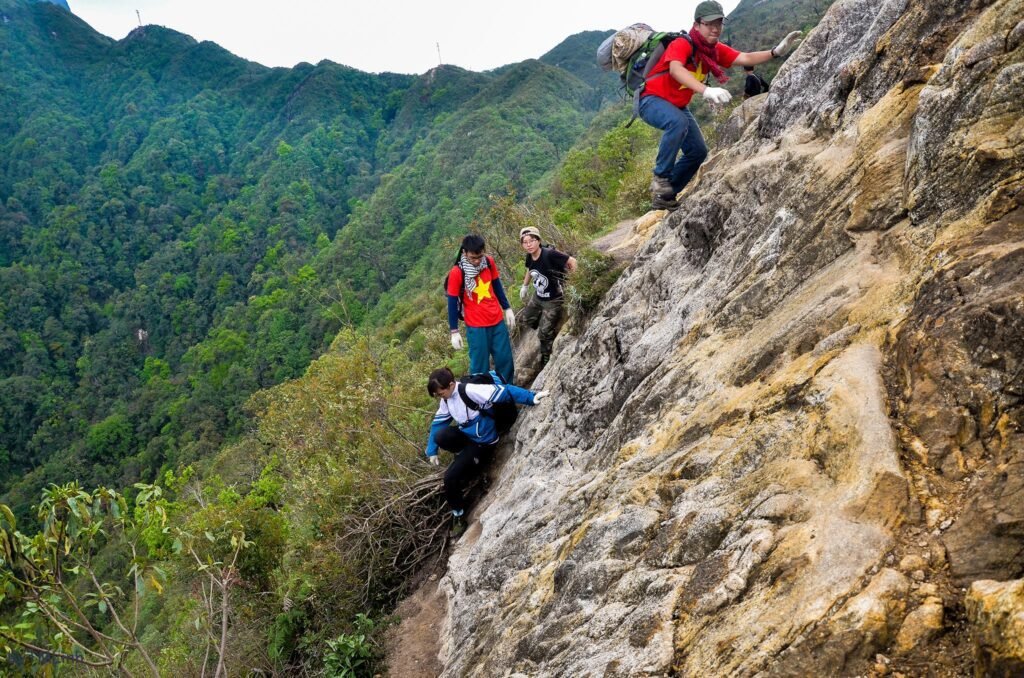

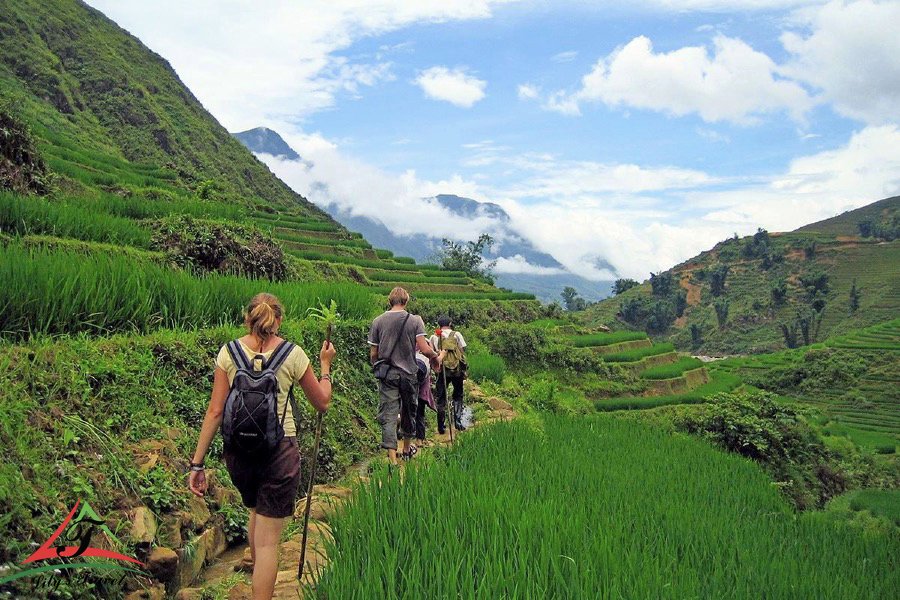

5. Rich Indigenous Cultural Heritagec
In Sapa, traditional life unfolds vividly, showcasing a fascinating culture rich in tradition and vibrant colors. The region is home to several ethnic communities, including the Red Dao, H’mong, Tay, and Giay, each with unique characteristics, attire, languages, and cultural practices.
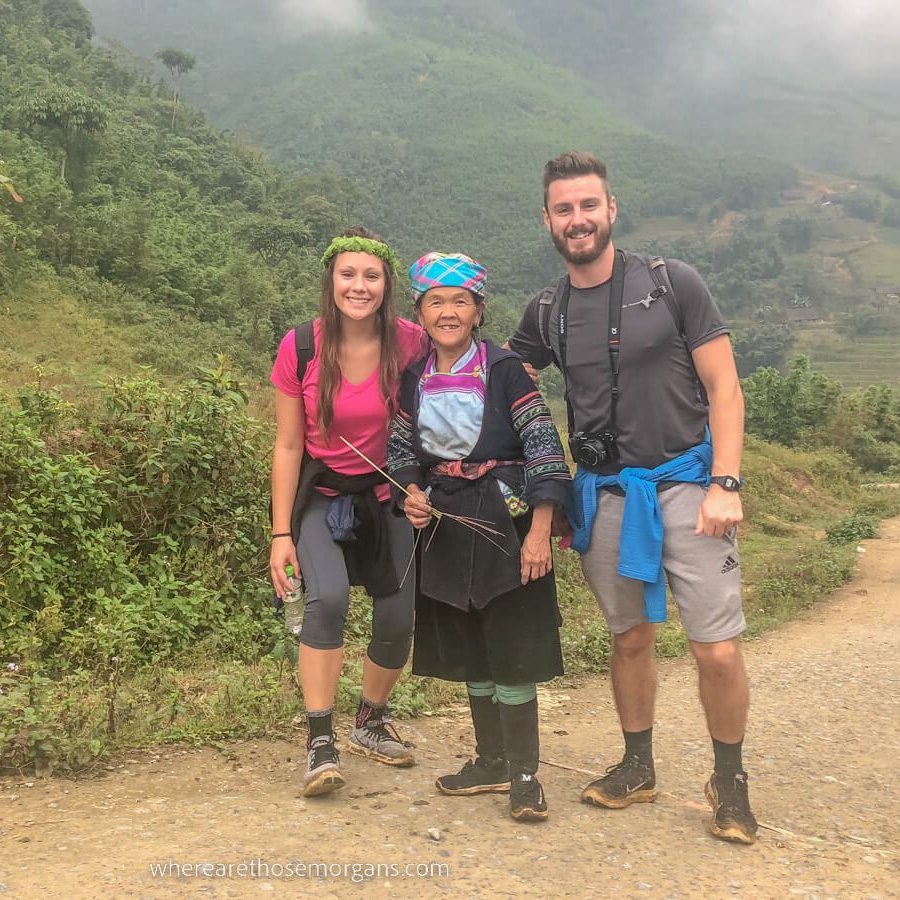

- Originating from China, the Red Dao community settles in valleys and mountainous areas, easily identifiable by their distinctive red headscarves. They are known for their traditional herbal bathing and foot soaking methods.
- The H’mong people, comprising over 50% of Sapa’s population, often inhabit higher-altitude regions and are credited with creating the unique terraced fields dotting the landscape.
- Tay people commonly reside in stilt houses and are renowned for their rice-based dishes such as com (young sticky rice), banh day (round glutinous rice cake), and xoi (sticky rice).
- The Giay community, found in villages like Lao Chai and Ta Van, excel in traditional crafts like bamboo weaving and woodworking, showcasing their artisanal skills.


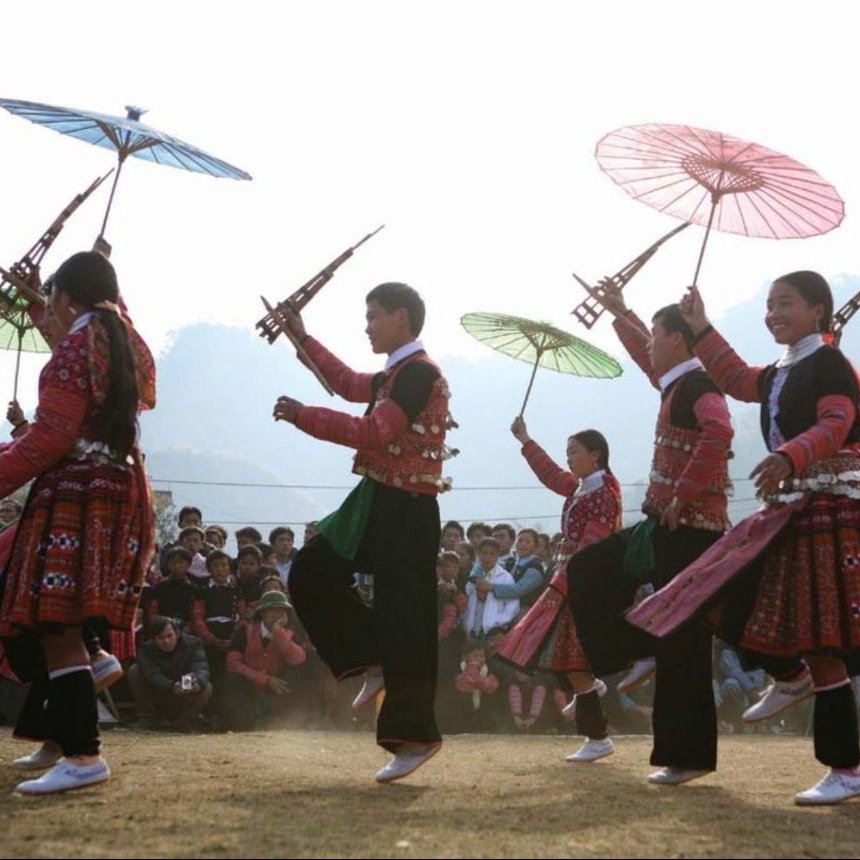

6. Ideal Travel Destination Year-Round
You can plan your trip to Sapa at any time of the year, and here’s why:
- Autumn (August – October): Considered the prime time to visit, autumn brings cool and pleasant weather to Sapa. With temperatures averaging around 20 – 23°C, you’ll experience the unique phenomenon of witnessing all four seasons in a day. Additionally, it’s the perfect time to see the ripening rice fields.
- Winter (November – February): During the winter months, temperatures drop to approximately 10 – 15°C, enveloping Sapa in clouds and mist, creating a picturesque “town in the mist” ambiance.
- Spring (February – May): Spring in Sapa offers temperatures ranging from 15 to 20°C, accompanied by blooming flowers and vibrant local festivals, adding to the charm of the season.
- Summer (June – July): Despite being summer, Sapa’s mountainous terrain ensures a more pleasant climate with daytime temperatures around 25°C, providing relief from the heat experienced in the lowlands of the country.
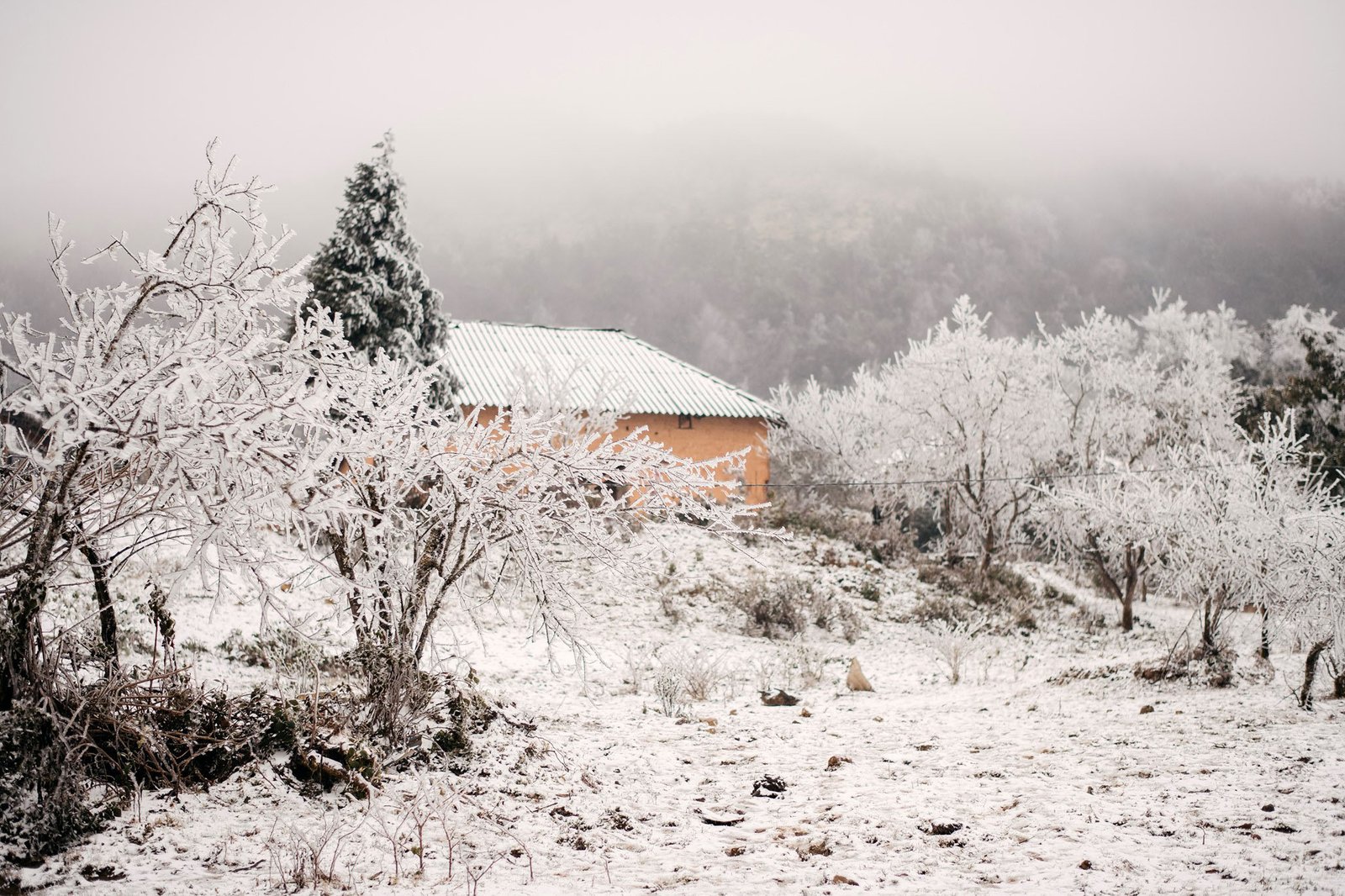

Sapa’s Winter
Let’s Explore Sapa >>> The Definitive Travel Companion
For Sun Getaways Travel, the response to the question “Is Sapa, Vietnam worth visiting?” is unequivocally affirmative. It’s a place brimming with charm, boasting iconic natural landscapes and a unique local culture. Each moment spent here feels enriching and immersive, and I sincerely hope you’ll also have the opportunity to fully embrace its essence during your travels. While Sapa has evolved into a bustling hub in Northwest Vietnam, you’ll ultimately uncover its authentic and untouched core during your visit.
Alternatively, you can explore the available packages below for a seamless travel experience:
Ask a question
Leave a Comment (0)
No questions yet. Be the first to ask a question!


